Abstract
Immune responses following antigen ingestion vary from stimulation to suppression depending on animal species, antigen, and experimental protocol. Young adult rabbits were given either 0.02% diphtheria toxoid or 0.1% bovine serum albumin in drinking water for 10-day periods, a protocol previously found to immunize human infants fed bovine serum albumin. Specific serum antibody was detected by radioimmunoassay in 10 of 13 rabbits fed diphtheria toxoid for 10 days and 11 of 13 rabbits fed bovine serum albumin. Response to oral diphtheria toxoid in some animals was equal to that after an injection of alum-precipitated diphtheria and tetanus toxoids. All rabbits fed a second course of either antigen showed an enhanced, rapid rise in antibody concentration. Avidity of the antibody also increased markedly, suggesting that priming and memory had been established during the first feeding. Similar anamnestic responses occurred in animals given a parenteral challenge after ingesting antigen. One month after administration of diphtheria toxoid, no significant difference in serum antibody levels was present between unfed animals challenged with diphtheria-tetanus toxoids and although avidity of the antitoxin was higher in fed animals. Antibody activity could be detected only in the immunoglobulin G serum fractions with either antigen. These responses suggest that oral immunization protocols using protein antigens can be adapted for use against toxins causing disease.
Full text
PDF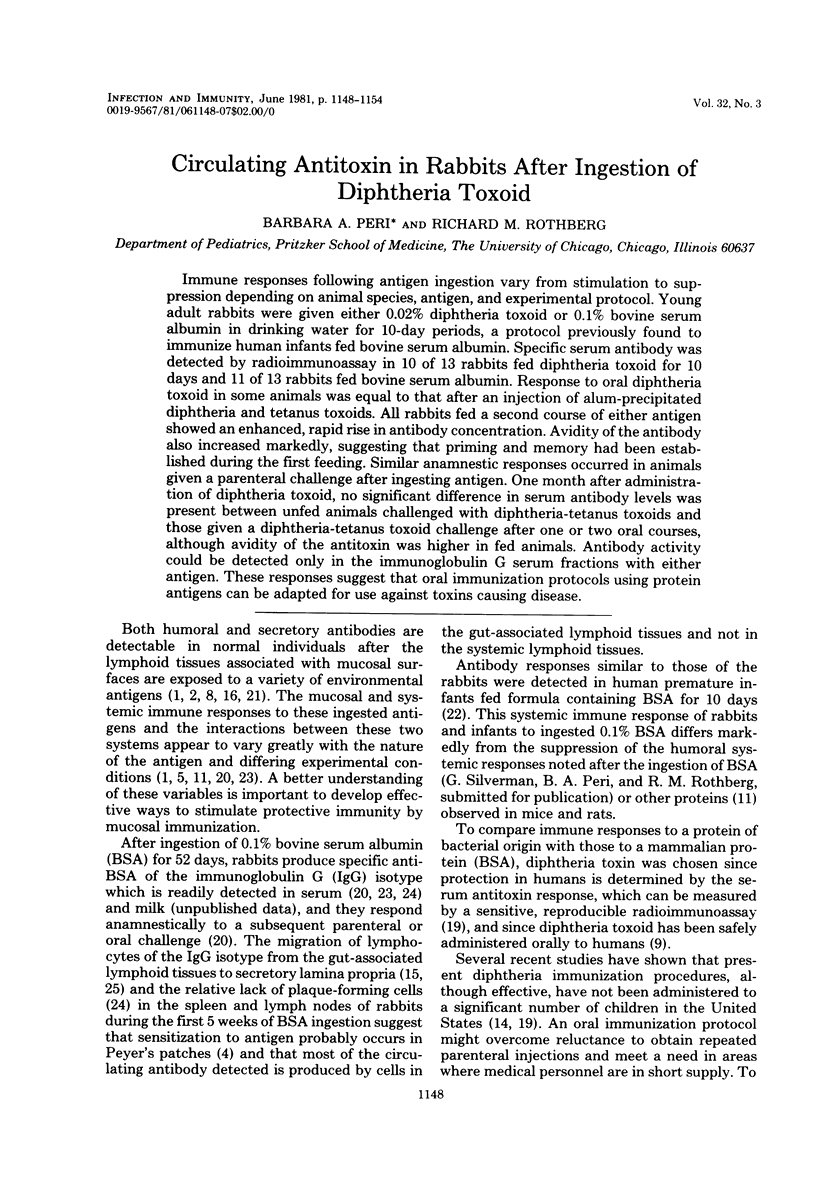
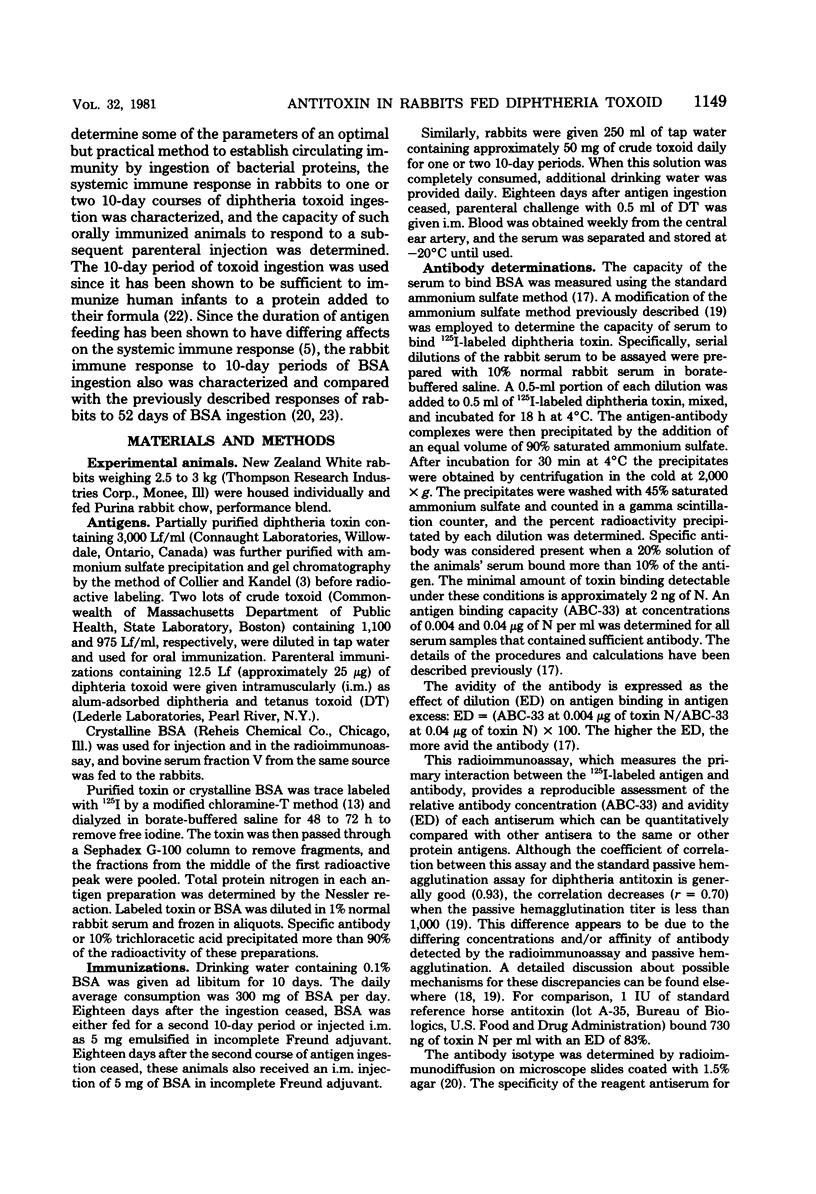
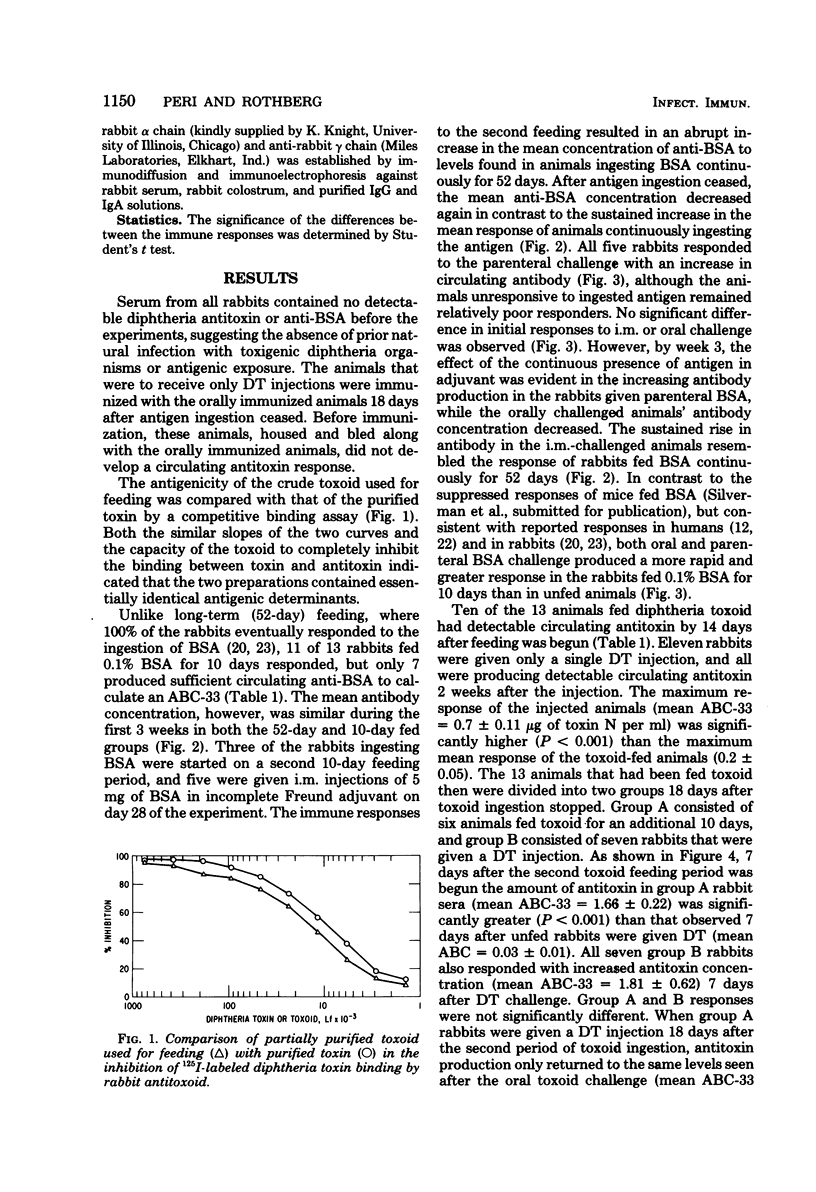
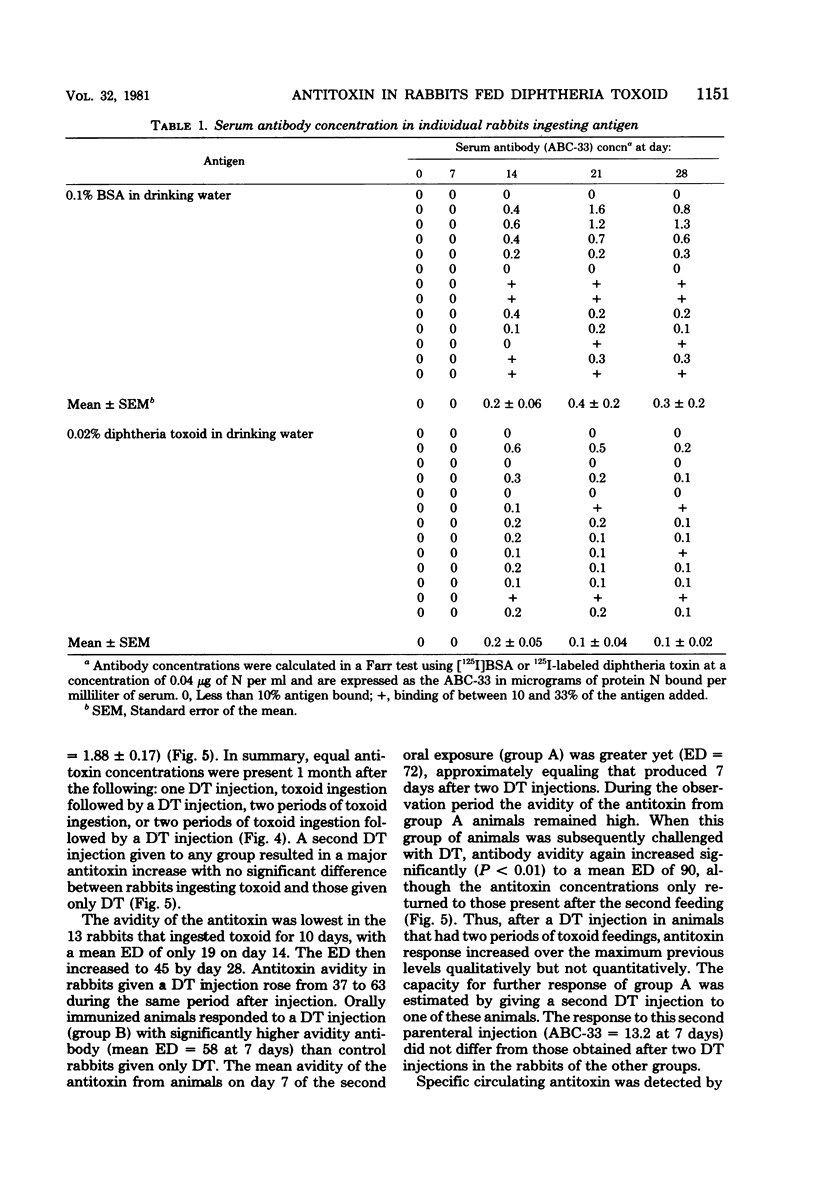
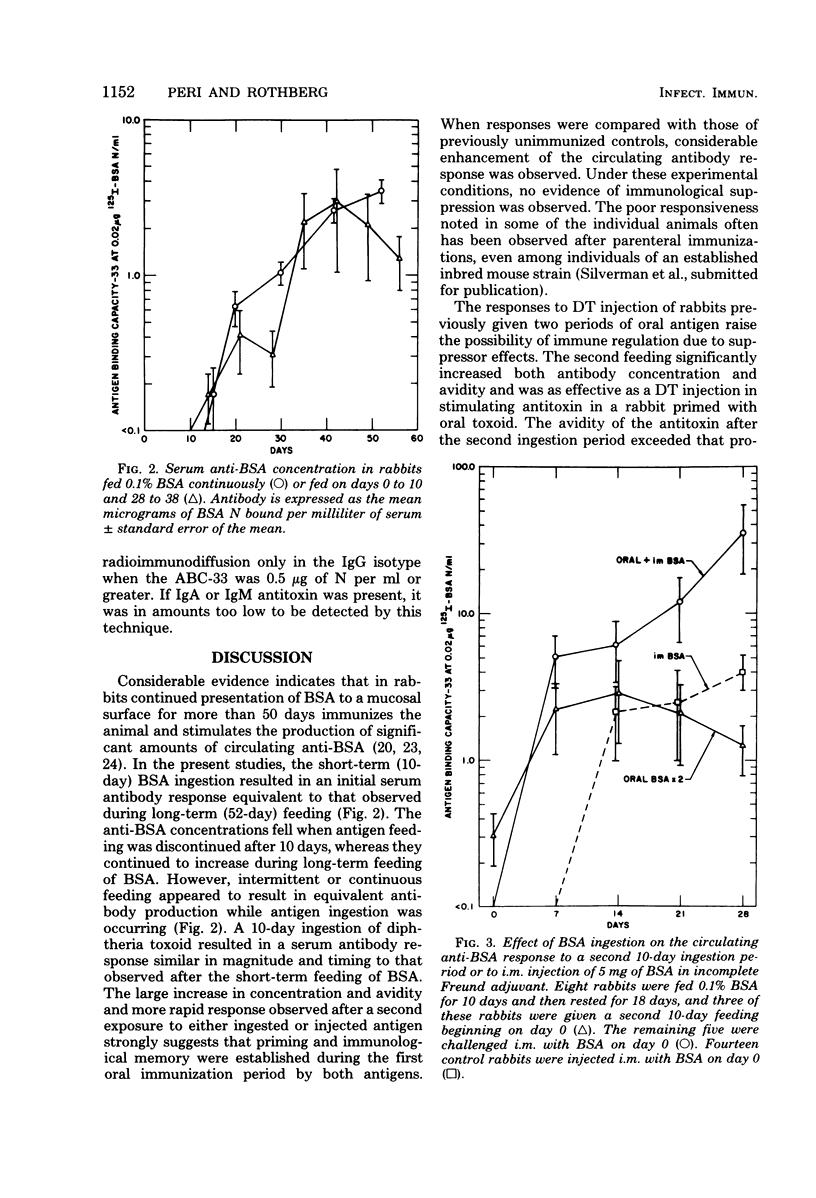
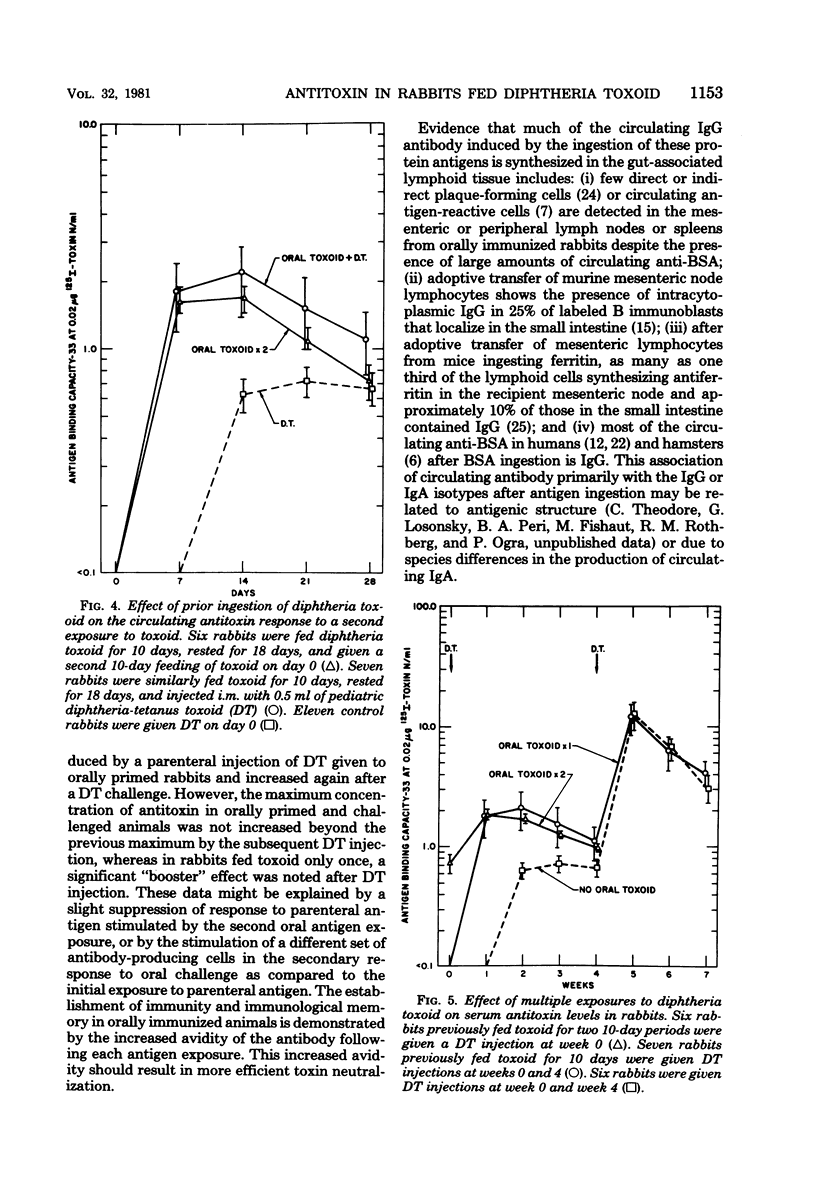
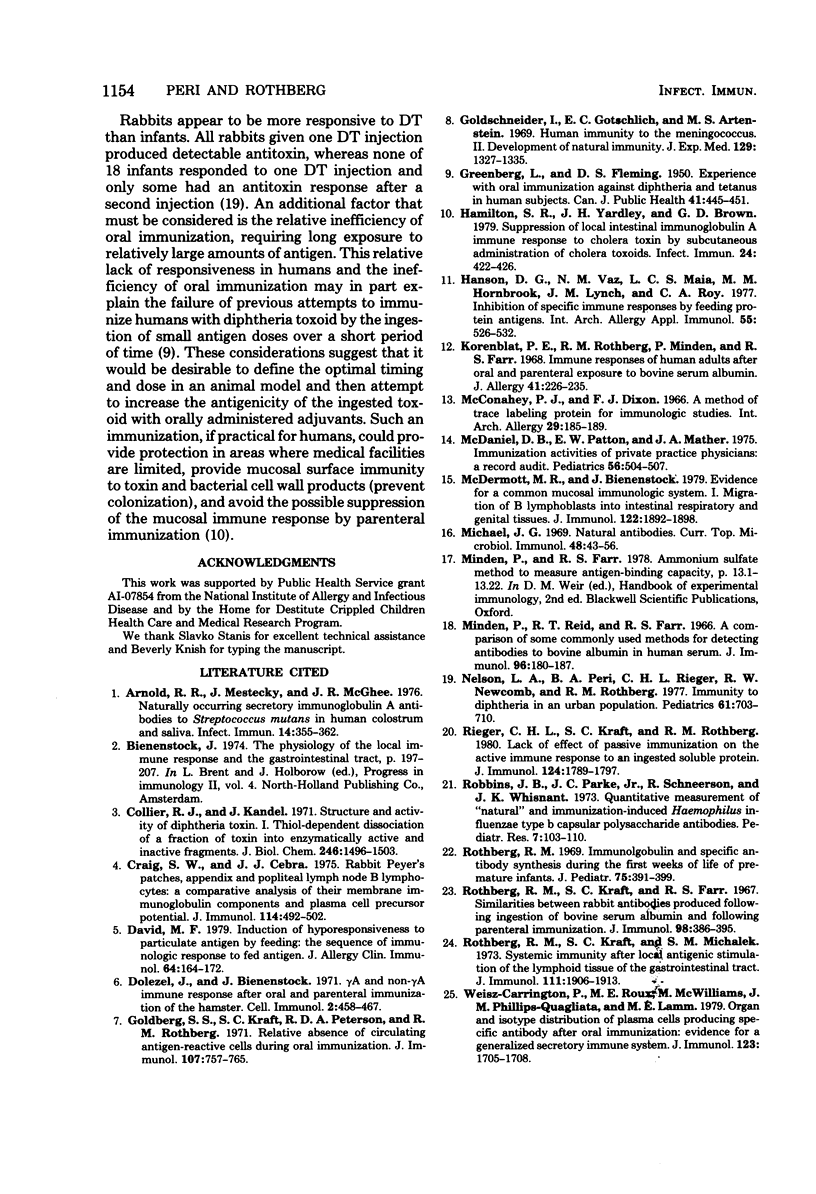
Selected References
These references are in PubMed. This may not be the complete list of references from this article.
- Arnold R. R., Mestecky J., McGhee J. R. Naturally occurring secretory immunoglobulin A antibodies to Streptococcus mutans in human colostrum and saliva. Infect Immun. 1976 Aug;14(2):355–362. doi: 10.1128/iai.14.2.355-362.1976. [DOI] [PMC free article] [PubMed] [Google Scholar]
- Collier R. J., Kandel J. Structure and activity of diphtheria toxin. I. Thiol-dependent dissociation of a fraction of toxin into enzymically active and inactive fragments. J Biol Chem. 1971 Mar 10;246(5):1496–1503. [PubMed] [Google Scholar]
- Craig S. W., Cebra J. J. Rabbit Peyer's patches, appendix, and popliteal lymph node B lymphocytes: a comparative analysis of their membrane immunoglobulin components and plasma cell precursor potential. J Immunol. 1975 Jan;114(1 Pt 2):492–502. [PubMed] [Google Scholar]
- David M. F. Induction of hyporesponsiveness to particulate antigen by feeding: the sequence of immunologic response to fed antigen. J Allergy Clin Immunol. 1979 Sep;64(3):164–172. doi: 10.1016/0091-6749(79)90091-5. [DOI] [PubMed] [Google Scholar]
- Dolezel J., Bienenstock J. A and non- A immune response after oral and parenteral immunization of the hamster. Cell Immunol. 1971 Oct;2(5):458–468. doi: 10.1016/0008-8749(71)90056-6. [DOI] [PubMed] [Google Scholar]
- GREENBERG L., FLEMING D. S. Experience with oral immunization against diphtheria and tetanus in human subjects. Can J Public Health. 1950 Nov;41(11):445–451. [PubMed] [Google Scholar]
- Goldberg S. S., Kraft S. C., Peterson R. D., Rothberg R. M. Relative absence of circulating antigen-reactive cells during oral immunization. J Immunol. 1971 Sep;107(3):757–765. [PubMed] [Google Scholar]
- Goldschneider I., Gotschlich E. C., Artenstein M. S. Human immunity to the meningococcus. II. Development of natural immunity. J Exp Med. 1969 Jun 1;129(6):1327–1348. doi: 10.1084/jem.129.6.1327. [DOI] [PMC free article] [PubMed] [Google Scholar]
- Hamilton S. R., Yardley J. H., Brown G. D. Suppression of local intestinal immunoglobulin A immune response to cholera toxin by subcutaneous administration of cholera toxoids. Infect Immun. 1979 May;24(2):422–426. doi: 10.1128/iai.24.2.422-426.1979. [DOI] [PMC free article] [PubMed] [Google Scholar]
- Hanson D. G., Vaz N. M., Maia L. C., Hornbrook M. M., Lynch J. M., Roy C. A. Inhibition of specific immune responses by feeding protein antigens. Int Arch Allergy Appl Immunol. 1977;55(1-6):526–532. doi: 10.1159/000231966. [DOI] [PubMed] [Google Scholar]
- Korenblat P. E., Rothberg R. M., Minden P., Farr R. S. Immune responses of human adults after oral and parenteral exposure to bovine serum albumin. J Allergy. 1968 Apr;41(4):226–235. doi: 10.1016/0021-8707(68)90046-4. [DOI] [PubMed] [Google Scholar]
- McConahey P. J., Dixon F. J. A method of trace iodination of proteins for immunologic studies. Int Arch Allergy Appl Immunol. 1966;29(2):185–189. doi: 10.1159/000229699. [DOI] [PubMed] [Google Scholar]
- McDaniel D. B., Patton E. W., Mather J. A. Immunization activities of private-practice physicians: a record audit. Pediatrics. 1975 Oct;56(4):504–507. [PubMed] [Google Scholar]
- McDermott M. R., Bienenstock J. Evidence for a common mucosal immunologic system. I. Migration of B immunoblasts into intestinal, respiratory, and genital tissues. J Immunol. 1979 May;122(5):1892–1898. [PubMed] [Google Scholar]
- Michael J. G. Natural antibodies. Curr Top Microbiol Immunol. 1969;48:43–62. doi: 10.1007/978-3-642-46163-7_3. [DOI] [PubMed] [Google Scholar]
- Nelson L. A., Peri B. A., Rieger C. H., Newcomb R. W., Rothberg R. M. Immunity to diphtheria in an urban population. Pediatrics. 1978 May;61(5):703–710. [PubMed] [Google Scholar]
- Rieger C. H., Kraft S. C., Rothberg R. M. Lack of effect of passive immunization on the active immune response to an ingested soluble protein. J Immunol. 1980 Apr;124(4):1789–1797. [PubMed] [Google Scholar]
- Robbins J. B., Parke J. C., Jr, Schneerson R., Whisnant J. K. Quantitative measurement of "natural" and immunization-induced Haemophilus influenzae type b capsular polysaccharide antibodies. Pediatr Res. 1973 Mar;7(3):103–110. doi: 10.1203/00006450-197303000-00001. [DOI] [PubMed] [Google Scholar]
- Rothberg R. M. Immunoglobulin and specific antibody synthesis during the first weeks of life of premature infants. J Pediatr. 1969 Sep;75(3):391–399. doi: 10.1016/s0022-3476(69)80264-7. [DOI] [PubMed] [Google Scholar]
- Rothberg R. M., Kraft S. C., Farr R. S. Similarities between rabbit antibodies produced following ingestion of bovine serum albumin and following parenteral immunization. J Immunol. 1967 Feb;98(2):386–395. [PubMed] [Google Scholar]
- Rothberg R. M., Kraft S. C., Michalek S. M. Systemic immunity after local antigenic stimulation of the lymphoid tissue of the gastrointestinal tract. J Immunol. 1973 Dec;111(6):1906–1913. [PubMed] [Google Scholar]
- Weisz-Carrington P., Roux M. E., McWilliams M., PHILLIPS-Quagliata J. M., Lamm M. E. Organ and isotype distribution of plasma cells producing specific antibody after oral immunization: evidence for a generalized secretory immune system. J Immunol. 1979 Oct;123(4):1705–1708. [PubMed] [Google Scholar]


